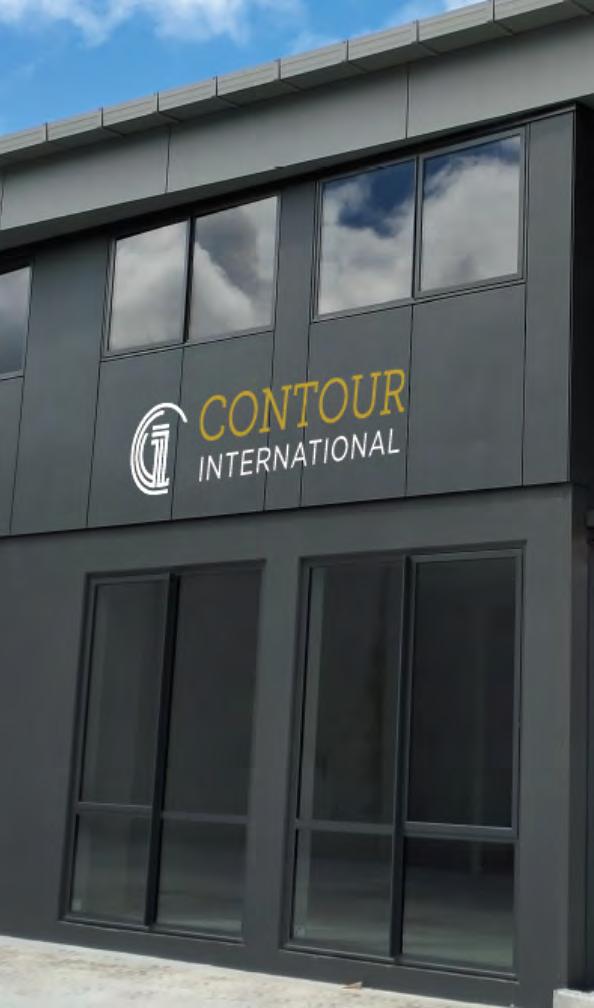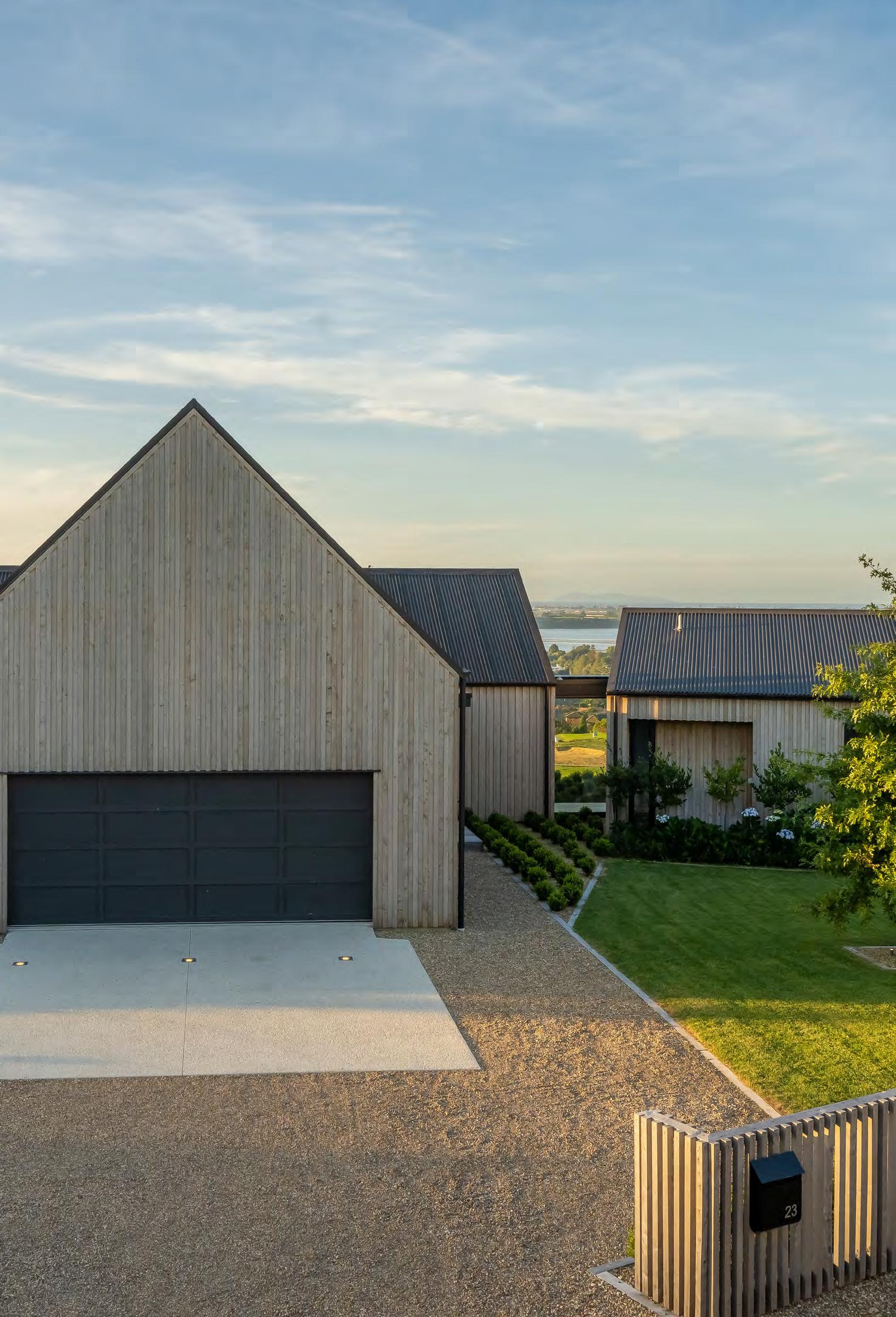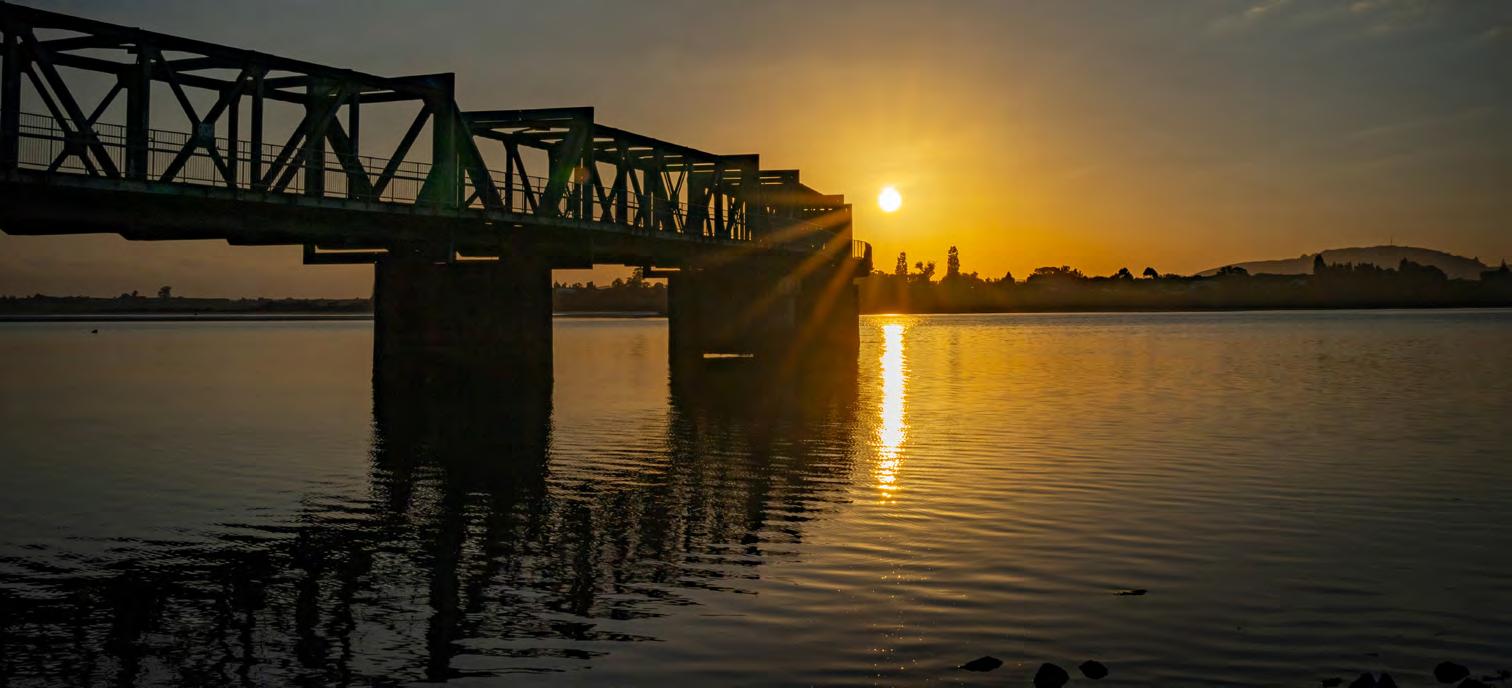

Rates rebalancing is looming for Tauranga
Some Tauranga businesses face a significant rates increase as the recently reappointed city commissioners work to rebalance the city’s transport rating inequities. They have reiterated that the city had not in the past paid for ‘growth with growth’, and say the rates allocation across infrastructure and transport use is far from equitable.
By RICHARD RENNIE
In a recent “meet the commissioners” session to business leaders, commissioners Anne Tolley and Stephen Selwood outlined how city traffic infrastructure is to be a key priority over the next three years.
Head commissioner Tolley again reiterated to business heads that Tauranga city had not paid for “growth with growth”, and the rates allocation across infrastructure and transport use was far from equitable at present.
In total, the council is proposing to spend $1.58 billion over the next 10 years on traffic infrastructure.
The largest portions include $171 million on walkways/cycleways throughout the city, $164 million on the eastern corridor routes and $157 million on the Hewlett’s Rd-Totara Street-Hull Road sub-catchment.
The biggest single ticket item is the $205 million allocated for western
state highway growth projects around Tauriko.
“The modelling tells us this is what we need to invest in order to just maintain the status quo, given continuing growth,” said Selwood. “It is very clear we need to get on with the key state highway projects and the Hewlett’s-Hull project.”
But research has revealed Tauranga city’s portioning of rates to roading is significantly out of kilter.
An Insight Economic survey shows road usage in the city split roughly 50:50 between residents and industrial-commercial users.
But 75 percent of the city’s road rating income is generated from household ratepayers. Typically, in most New Zealand cities the commercial and industrial sector contribute to about a third to total rate take.
“So, on the basis of ‘fair share’ of who pays, we want to move to more of a 50:50 model,” Selwood says.
At present Tauranga businesses pay a general rate differential of 1.6 ($1.60 in rates for every $1 paid by residential householders on a similar valued property). Again, this is considerably lower than other metro councils in New Zealand.
The commissioners’ proposed change will see a two-year transition from 1.6 to 1.9 to 2.3, to cushion the blow of the increase.
“We recognise that some businesses are doing quite well while others, particularly those in hospitality are not,” says Anne Tolley.
No rates increase for some
About 30 percent of the city’s CBD properties will experience no rates increase or a rates reduction, 63 percent will have an increase of less than 10 percent, and the remainder an increase more than 10 percent.
The average rates increase proposed in this year’s annual plan stands at 13.7 percent.
“Basically, those that are earning decent market rentals and doing quite well will go up, those that are not will go down.”
Staving off property losses
Selwood said that if the investment was not made now in rates income into infrastructure, the insidious impact of productivity losses in the city will have a much greater effect on its future growth and liveability.
Another funding lever commissioners of the indebted city also intend to pull is via the new infrastructure funding and financing Act (IFF).
The IFF is intended to provide councils in fast-growing areas including Hamilton, Tauranga and Queenstown, with a financing tool that keeps the debt off councils’ books
when funding housing and infrastructure spend.
The model provides opportunities for local councils and iwi to partner with private developers free of council debt limits, which are already at their ceiling in Tauranga.
“Its underlying principle is that those who benefit from a project will pay for it via a levy collected in the same way as their property rates,” said Tolley.
“If a decision to proceed is made, it also signals to our partners that TCC is committed to making these projects happen.”
The Tauriko West housing and infrastructure project would be funded by a IFF levy on each of the 2000 new properties proposed. The levy is expected to be about $2000 to $2500 a year.
“This gives us access to $500 million more than we could raise off our own balance sheet,” said Tolley.
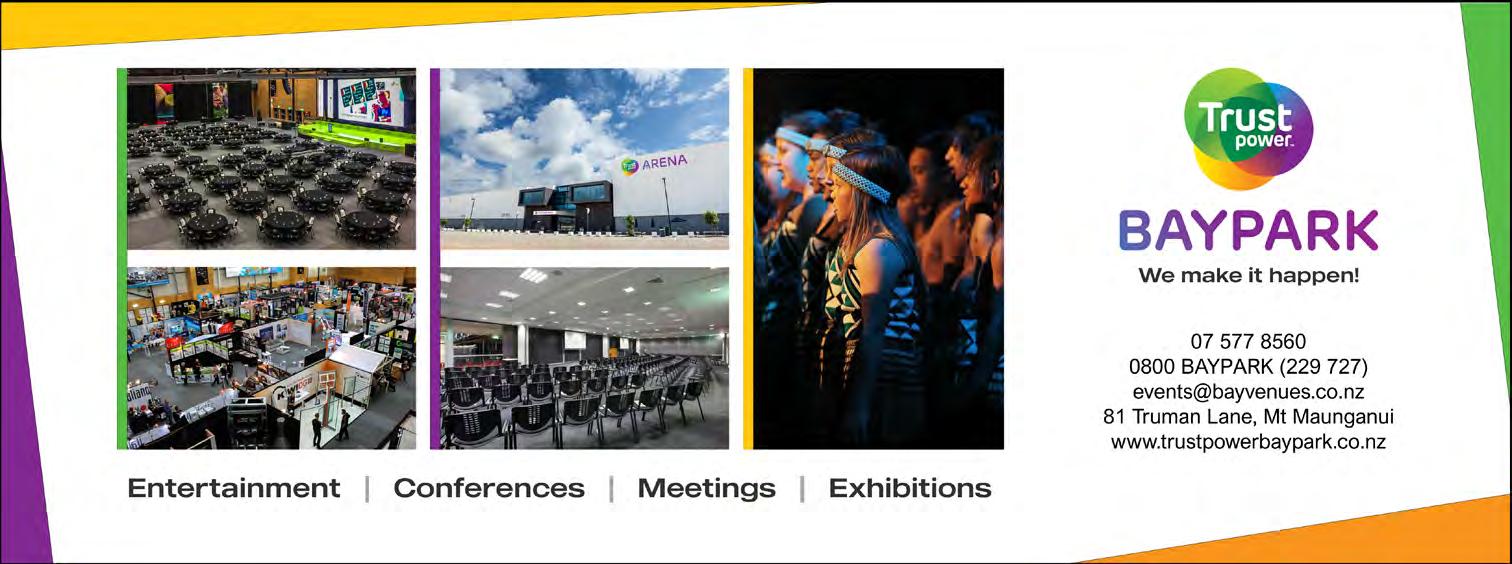


First Zespri Kiwifruit charter vessel sails for Japan
The first 4,100 tonnes (1.15 million trays) of this season’s Zespri SunGold Kiwifruit have left Port of Tauranga, bound for Kobe and Tokyo in Japan, marking the start of Zespri’s 2022 shipping programme.
By DAVID PORTER
The MV Solent Star is the first of a planned 72 ships set to deliver a crop estimated to be over 190 million trays (or 680,000 tonnes) of fruit to Zespri’s global markets.
“We’re looking at exporting more than 115 million trays of SunGold Kiwifruit and around 70 million trays of Green in 2022, and this season also marks our first commercial volumes of Zespri RubyRed Kiwifruit which will be available to consumers in New Zealand, Singapore, Japan and China,” said Zespri chief global supply officer Alastair Hulbert.
“Demand for Zespri Kiwifruit is incredibly strong across our global markets and this season we’re expecting another large and great-tasting crop of fruit,” he said.
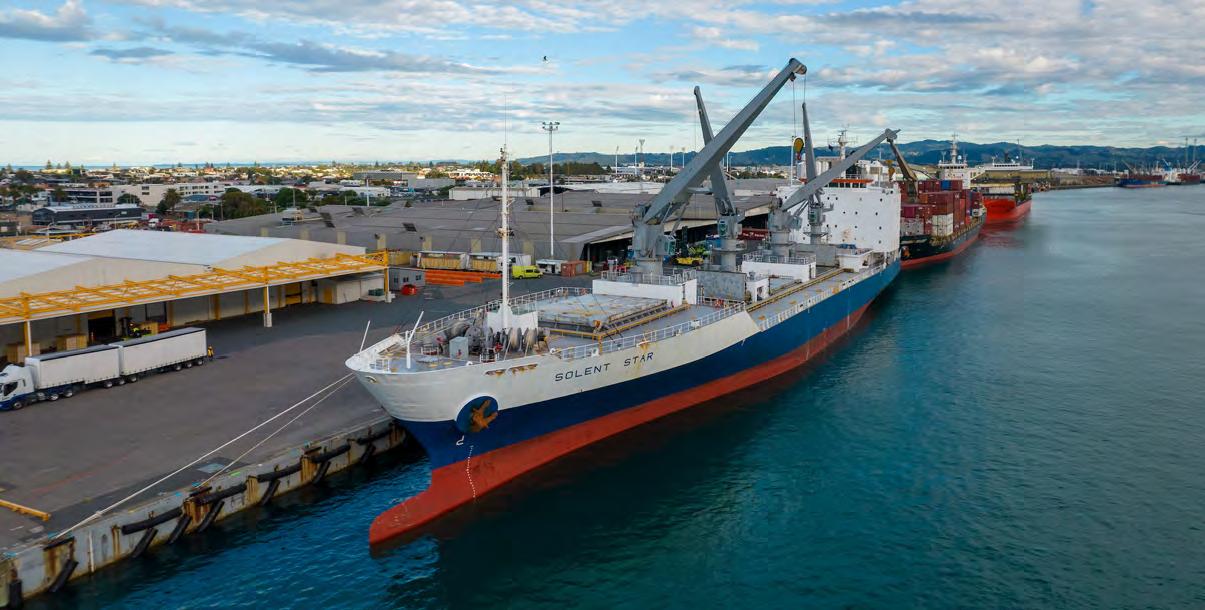
Hulbert said that while global demand for kiwifruit remained strong, the industry was facing a number of headwinds this season given the ongoing impact Covid-19 is having on labour availability.




“We know this season is going to be particularly challenging given the significant labour shortage we have and the continued disruption Covid19 is imposing on our global supply chain. The labour shortage will place significant pressure on the industry and it will challenge our ability to get all of the crop picked. Our focus remains on looking after our people and doing everything we can to safely pick, pack and ship as much fruit as possible.
“This will include working closely with our long-term shipping partners to navigate the congestion we’re seeing amongst global shipping
networks.” Hulbert said that in total, Zespri expected to undertake four charter sailings to North Europe, 12 to the Mediterranean, six to the US West Coast and 50 to Zespri’s Asian markets, and to send around 20,000 containers of kiwifruit this season.
“The continued use of charter vessels will be important in our abil-








ity to avoid much of the congestion we’re seeing at container ports, and we’re also looking at new options this season such as partnering with T&G Global to co-ship fruit to North America.
“This reflects the growing demand we’re seeing for our fruit in the region, and our first liner will depart in late April.
Photo JamieTroughton/ Dscribe Media Services.
www.bopbusinessnews.co.nz
CONTACT INFORMATION
PUBLISHER
Alan Neben, Ph: 021 733 5366
Email: alan@bopbusinessnews.co.nz
EDITOR
David Porter, Mob: 021 884 858
Email: david@bopbusinessnews.co.nz
PRODUCTION – Copy/Proofs/Graphic Design
Times Media – Clare McGillivray
Email: clare@times.co.nz
ADVERTISING INQUIRIES
BUSINESS DIRECTOR
Pete Wales, Mob: 022 495 9248
Email: pete@bopbusinessnews.co.nz
ELECTRONIC FORWARDING
EDITORIAL: News releases/Photos/Letters: david@bopbusinessnews.co.nz
GENERAL INQUIRIES: info@bopbusinessnews.co.nz
Bay of Plenty Business News has a circulation of 8000, distributed throughout Bay of Plenty between Waihi and Opotiki including Rotorua and Taupo, and to a subscription base. www.bopbusinessnews.co.nz
Bay of Plenty Business Publications
309/424 Maunganui Rd, Mt Maunganui, 3116
Bay of Plenty Business Publications specialises in business publishing, advertising, design and print media services.
From the editor
First of all, this is not a remote European/US conflict. It is affecting us all. More isolated countries down under such as New Zealand are already feeling the effects of this war with skyrocketing shipping costs and an increase in the cost of staple food items. Which it adds to our current government’s long-term failure to address New Zealand’s inability to provide affordable housing, as it once promised to do.
Make no mistake – this is the nearest thing to a world war we have seen since 1945. It is especially tragic that Russia, which fought so bravely and lost so many lives in WW2, is now the undoubted aggressor
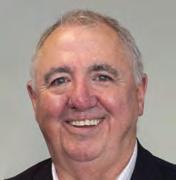
in an unprovoked war against its neighbour Ukraine.
Despite more or less dealing with the consequences of Covid 19, we are now all feeling the effects of Russian president Vladimir Putin’s war.
I watched with interest the recent interview by CNN’s Christiane Amanpour with Dmitry Peskov, the urbane English-speaking Kremlin spokesman who Putin pushes forward to make his country’s case internationally.
It is clearly just beginning to dawn on Putin that Russia has badly lost the information war in its latest battle with most of the western world.
Despite Russia’s near total grip on all media and all its ref-
It is very clear we need to get on with the key state highway projects…”
– Stephen Selwood


erences to what it laughingly continues to describe as its “special operation” in Ukraine, Peskov looked embarrassed as he mouthed lies and platitudes in response to Amanpour’s questioning. Even he didn’t appear to believe them.
One of the problems of exercising more or less total control over your own media, is that you become ill equipped to handle genuine probing journalistic coverage.
None of this is good for New Zealand. I do not doubt that Russia has some genuine security concerns in the wake of the dissolution of the Soviet Union. But invading a neighbour is no way to improve the situation. Despite Putin’s
As the editor of a monthly newspaper, I am always cautious when it comes to venturing an editorial opinion on a hot political topic when it may no longer prove to be one a few weeks after publication. But I can no longer remain silent about the travesty of war being wreaked by the Russian leadership upon their sovereign neighbour Ukraine. In case you missed
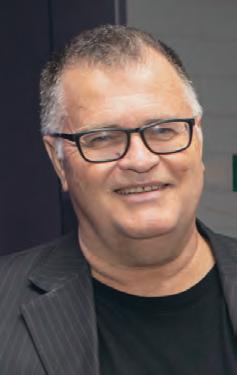
The
take in invading Ukraine. And though he may eventually batter some major cities and their civilians to the point of submission, he will then face keeping up a prolonged occupation.
And as the US has belatedly realised, occupying territory where you are simply not wanted, is ultimately doomed to failure.
Those who benefit from a project will pay from it via a levy collected in the same way as their property taxes.” – Anne Tolley


The future is now. The all-new, electrified 2022 NX series has arrived. With Hybrid and Plug-In Hybrid Electric powertrains you can choose an NX to fit in with a more carbon-neutral lifestyle, without compromising performance. Test drive the new NX at Lexus of Tauranga.
THE ALL NEW 2022 NX. THE NEXT LEVEL OF PERFORMANCE.
evident wish to restore the old Soviet Union and its borders and satellites, it won’t happen.
Russian leader – who seems in his rare international appearances to be losing the plot – has made a tragic mis-
David Porter
Tauranga braces for political change
One of the most remarkable political developments seen in the Bay of Plenty in a while has been the recently announced retirement of long-serving Tauranga MP Simon Bridges.
By DAVID PORTER
In addition, the announcement followed soon after Western Bay MP Todd Muller’s decision late last year to change his mind about his planned retirement and return to contest the next election. As is well known, Muller made a successful bid for the leadership at the time, spilling Bridges, but served only for a short time as leader before resigning, citing mental stress. Both MPs have long managed what by all accounts has been a successful parliamentary relationship as MPs for the region.
Since the defeat of Act leader Winston Peters, Tauranga and Western Bay of Plenty have long been hotbeds of contention for the National Party, along with Rotorua for National MP Todd McClay.
Speaking to Bay of Plenty Business News, Bridges described the impact of his retirement as being “a real whirlwind”. As he notes, on current polling he was likely to have become finance minister in a new National government at the next election.
Time for alternative life choices
“And you can achieve a lot in finance,” he said. But in the end, both for political reasons and given his 14 years already in the job, he opted to leave for alternative life choices and career reasons. As he noted, his youngest two of three children turn 10 and eight respectively in March and family was a major consideration.
“I’ve got a good 20 years of making some money and working less hard ahead of me,” he said.
“If I stayed on, I’m signing on for at least two terms and then [the kids] are in their teens and haven’t seen much of me and they don’t know me or maybe don’t like me. I made the decision for all of these family reasons. People think you’re making them up, but family is very important.”
Bridges has already verbally informed Parliamentary Services of his decision and spoken to the speaker of the house about his
plans. He will follow that up with formal notification of his intentions. He also has to give a valedictory speech in parliament, so the exact date of his departure and the following by-election remained unclear when we went to press.
Essentially the prime minister sets the date for a new election, but it is apparently a relatively casual process and the by-election will be simply about voting for the person rather than a party, as in full elections.
“Because I’m retiring the people of Tauranga are simply replacing me,” he said.
Bridges said he had no sense of who might replace him, but that he expected the by-election to be hotly contested by former councillors, other interested parties and the National Party.
“It’s somewhat sad but also exciting,” he said. Although vari ous commentators have suggested that Bridges already has a new job lined up, at the time we went to press he refused to comment spe cifically on his plans, other than to say that it would be good to have a “day job” and sleep in his own bed at night.
He is keen to pursue his experience and interest in infrastructure and possibly take on some board positions and is also exploring contribut ing some media comment. He has lived in Tauranga for over 20 years but is expected to move to Auckland while maintaining family ties here.
His wife Natalie runs a PR com pany in the town and is expected to continue to main tain that role.
“There’s a lot of specula tion but it’s too early for me to say,” he said, while insisting that Tauranga would remain a significant family base for him.
“It’s good to leave rather than be kicked out,” he said. “I won’t regret it.”
Muller praises Bridges’ contribution
Fellow Bay MP Todd Muller paid tribute to Bridges’ contribution to the city over the years.
“I was really surprised when Simon told us in caucus,” he said. “But if you follow his rationale you can understand it. He has given 14 years to serving Tauranga and the electorate.”
Muller famously toppled Bridges for the leadership, but only held the top role for a short period before giving it up when he was afflicted with unexpected nervous problems and at the time was planning to retire from parliament him-
If I stayed on, I’m signing on for at least two terms and then [the kids] are in their teens and haven’t seen much of me and they don’t know me or maybe don’t like me. I made the decision for all of these family reasons.”
– Simon Bridges
was unfortunate,” he said.
Overall, Muller said, he was in a better space than he had been for a while and the response since he had decided to stay on had been very positive.
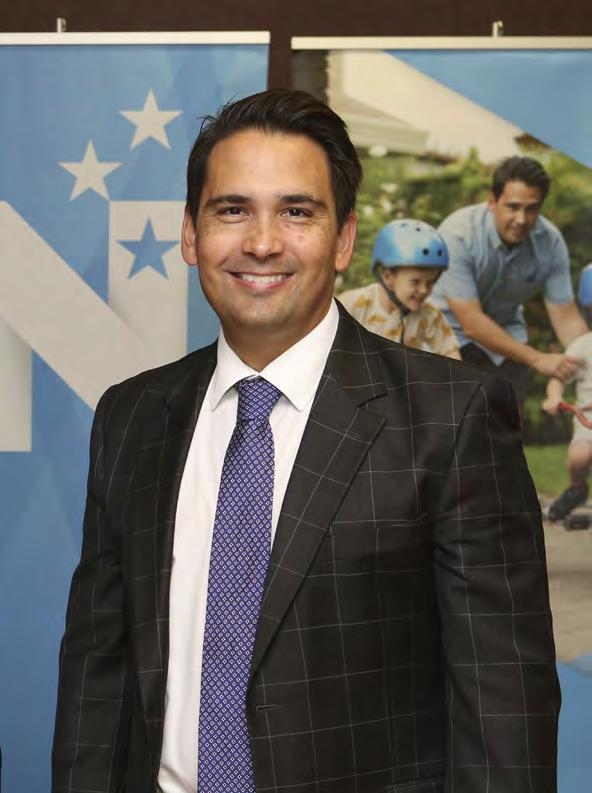
“I actually think that Simon’s decision has caused us to reflect and pause and think about the contribution he’s made. He’s been a huge contributor to Tauranga and the wider community and he’s been a massive advocate and voice for our city and at the cabinet table. He’s going to leave a hole.
“It might surprise people, but as local MPs we always got on well and worked well together professionally because we could see the relevance of National having a strong [regional] reputation down in Wellington. I will miss his humour - he’s got a classic sense of humour.”
Muller said it would be interesting to see what Bridges finishes up doing.
“I think Simon needs generous acknowledgement of what he’s achieved.”
Muller reflected on what he said was expected to be a rising level of animus in the population by the time of the next nationwide elections and that he was expecting “a brutal campaign” by then.
The elections could likely repeat the population splits and vitriol seen back in the early 1980s, he said.
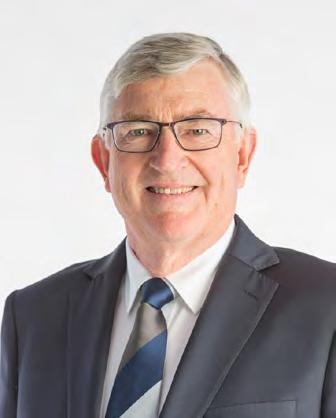
David Pilkington
Pilkington
retires as Port of Tauranga chair
Long-serving Port of Tauranga chair
David Pilkington has announced his retirement for later this year after nine years in the role and nearly 17 years on the Board.
“I am incredibly proud of the legacy we have built over that time,” he said.
“I have been fortunate to work with a highly skilled management team and fellow directors, who have been open in sharing their diverse points of view. As a team, we have stayed focused on our long-term goals, while remaining flexible and responsive to the challenging environment in which we operate.”
Pilkington’s retirement followed the retirement last year of chief executive Mark Cairns. The chair will be succeeded by Julia Hoare at the end of this July. Hoare joined the Board in 2015 and currently chairs its Audit Committee. She has a wide range of commercial, financial, tax, regulatory and sustainability expertise developed from both her extensive governance roles and over the course of two decades as a partner with PwC.
She is currently also Deputy Chair of The a2 Milk Company Limited, and a Director of Auckland International Airport Limited and Meridian Energy Limited. She is also President of the Institute of Directors and a member of the Chapter Zero New Zealand Steering Committee.
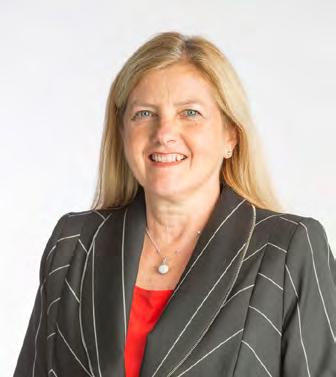
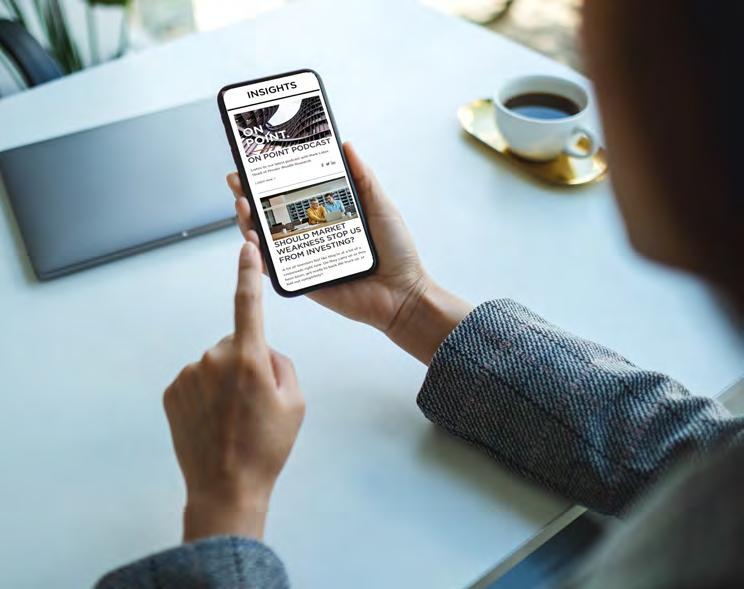
Julia Hoare
Simon Bridges
Cyber risk management should be your top priority in 2022
You don’t have to look far to find news of a major data breach these days. It appears cyber security is a term sitting front and centre on many minds while malicious attacks continue to damage companies and corporations.
Acyber-attack is when an individual or an organisation deliberately and maliciously attempts to breach the information system of another individual or organisation. While there is usually an economic goal, some recent attacks show destruction of data as a goal. Have you ever heard of Sohanad, SnakeKeylogger, Formbook, AgentTesla or Trickbot? Or perhaps Enraged Duck or Pinchy Spider rings a bell?
Surprisingly, these are not the characters of comic books or Marvel movies, but the names of common malware and cyber-attacks. MIT Technology Review reported that 2021 was the worst year for cyber and malware attacks in New Zealand history with the number of attacks reported doubling from 2020. These attacks have cost businesses dearly, more than just monetary profits, but data loss and recovery which can cost businesses millions, not to mention the loss of trust and negative impact on a company’s reputation.
There are several contribu-

TECH TALK
> BY MARIETTE TOLMAY
Mariette Tolmay is the marketing lead at Stratus Blue. She can be contacted at mariette@stratusblue.co.nz.
tors to the increasing number of cyber-attacks, with the most notable one being the increasing trend in hybrid work.
With the easing of Covid restrictions, many employees are finding themselves in the position of having to choose between working remotely or splitting their time between the office and home.
Given organisations adopted this way of working on the fly (and continue to do so, two years on) it has opened an extraordinary new attack surface, comprised of distributed mobile devices and not always adequately secured connections.
As Andrew Gogarty, Secon chief security evangelist says “This work-life shift means that businesses need to continue to be vigilant and address
the multiple vulnerabilities that still linger.”
How much risk can you stomach?
Organisations need to be asking themselves how much risk they are prepared to stomach. For example, as organisations become increasingly reliant on digital technologies, is the risk they face increasing or simply changing in nature? Just how aware are businesses of the risk landscape that exists? Should a greater proportion of IT budgets be allocated to security? How much? What implications does the growing use of cloud platforms have for an organisation’s risk profile? Does your organisation understand it’s cyber risk score and what that entails?
These two need no introduction… but we’ll do it anyway
Congratulations to Holland Beckett Law’s newest partners, Leesa Speed and Georgina Smith.
Leesa joined the Family Law Team in 2015. A relationship expert of a different kind, Leesa is your go-to whether you are entering a new relationship or exiting an old one. As a senior and respected family lawyer, Leesa is on the panel of Lawyer for Child, and is a regular advocate in the Family Court. Outside of work, she is actively involved in the Papamoa community, and is a Board of Trustees parent representative for Golden Sands School. If you need legal advice or representation in court proceedings, Leesa does it all with care and compassion.
Georgina came on board as a senior lawyer in the property and commercial team and carries 15 years’ legal experience, both here and abroad. She advises on a range of matters including loan and security structuring, commercial leasing, property development and conveyancing. From one field to another, you will find Georgina on defence for the Mount Maunganui Hockey Club. Georgina uses her governance skills on the Tauranga Hockey Association board, as well as being ‘part of the crew’ at Tauranga Musical Theatre.
We are delighted to announce Leesa and Georgina’s well-deserved promotion to Partnership. Holland Beckett Law is lucky to have you.

The high-profile attacks of NZ Post and Kiwi Bank in 2021, where both became the target of malicious DDos attacks, highlighted that even large organisations make mistakes. It’s clear that a strong, proactive stance on cybersecurity is crucial for any organisation.
The complexity of this topic leaves many feeling confused and overwhelmed. Across all industries, the methods by which data is breached, triggering a significant security incident, are often similar – if not the same.
Understanding the most common cyber security mistakes, and the potential financial and reputational loss to your business enable your business to implement improved security measures.
These range from things as granular as out-of-date software to large-scale struggles like a lack of support from leadership teams.
There seem to be ongoing common errors that organisations are making that leaves them exposed. The following is a sampling of the most common issues facing information security professionals and the organisations they serve:
• Small organisations don’t recognise that their assets and data are still attractive to cyber criminals
• Working from home or other places means one misuse of VPN credentials can result in an attacker gaining access to all devices throughout an organisation.
• Security is approached as an IT issue and not a busi-
ness issue – lack of cyber security training and awareness among employees
• Organisations do not understand their network and the importance of updates and patching
• Relying solely on antivirus – these are not sufficient to prevent advanced persistent attacks
The list goes on, but what we do know is that 2022 will be another eventful year full of vulnerability exploits, account takeover attacks, phishing, and ransomware. Therefore, 2022 should be seen as an opportunity to go back and review the pivot-related changes of the last two years to see how visibility and control can be maintained to reduce your business risk from cyberattacks.
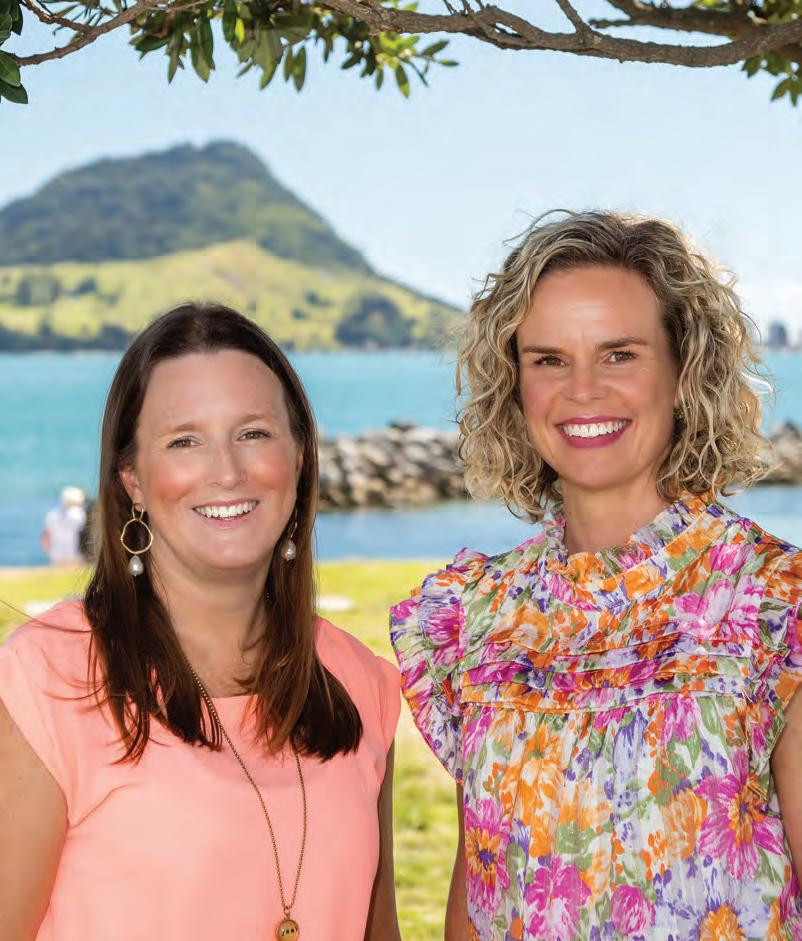

Around 75 percent of research or initial interest in purchasing a franchise business will start with a google search.
How should you research buying a franchise?
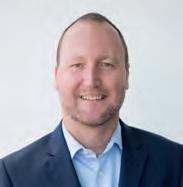
FRANCHISING
> BY NATHAN BONNEY
Nathan Bonney is a director of Iridium Partners. He can be reached at nathan@iridium.net.nz or 0275-393-022
So, you have decided you want to invest in a franchised business. What research should you do? Most franchisee entrepreneurs will undertake four steps in their research which will include:
1. Ask google
Around 75 percent of research or initial interest in purchasing a franchise business will start with a google search. After-all we research toasters and cars, so web-searching a franchise business seems quite logical and there is usually loads of information readily available from customer reviews, franchisee profiles and any media coverage. Of course, on-line information may not always be balanced, complete or even true and you need to evaluate the source as much as the information itself.
2. Visit the brand(s) website
Once a potential franchisee entrepreneur has narrowed their search to a category, it’s usual that the next on-line step is to visit the website of the brand, or brands in that category. Most franchises will have information on their websites relating specifically to franchising and how to become a franchisee. The amount and quality of the information may differ significantly and is not always correlated with the value or quality of the franchise business opportunity.
3. Contact and meet with the franchisor
At some stage, if someone is wishing to progress their interest in a franchise business, they will contact the brand owner or
franchisor. The response and steps from there can vary, some systems have highly developed and structured recruitment processes, whilst others may border on casual to hap-hazard. Again the recruitment processes may not always match the experience or franchise business once in the brand.
4. Speak to qualified and relevant advisors
Any purchase should involve consulting with professional advisors, usually an accountant and a solicitor. And most people will take this step. My caveat here is advisors need to provide qualified and relevant advice. With an emphasis on relevant. You need to ask if the advisor works in the franchised space, do they know the brand or have they consulted with any clients that has operated one?
Disappointingly I see far too often potential franchisee entrepreneurs take as gospel the advice of advisors that are not familiar or had any experience with franchising. What should you do?
Does this approach provide a comprehensive evaluation?
Well, no. It may provide a reasonable assessment of the brand or franchise opportunity, but critically it will not provide you with the answer to the all-important question, “is it the
right opportunity for you?”
There is however some additional research every potential franchisee entrepreneur should undertake before investing money and time in a particular franchise business.
Check that franchising is for you
Franchising generally is not for everyone, and that’s completely fine. It only becomes an issue when someone decides to purchase a franchised business and franchising isn’t the right fit for them. From experience I have seen this happen far too many times and the outcome will nearly always be one or all of dissatisfaction, lack of performance and or conflict.
But how do you know? There are actually two questions, the first, is being in business for yourself the right option, and the second, is a franchise the option for you? A great place to start is by visiting The Franchise Association of New Zealand website and completing a free on-line course.
Experience the brand
If it is a bricks and mortar business, like hospitality or retail, have you visited, purchased from and or experienced the brand in the past 12 months?
If it is a service-based brand, again have you had used or engaged with the brand in the past 12 months? If you haven’t –
Important decisions ahead

By ANNE TOLLEY, Tauranga Commission Chair
When we adopted Tauranga City’s 202131 Long-term Plan (LTP) last year, the commissioners signalled that more work was needed to find a fairer way of sharing the cost of operating the city and investing in much-needed infrastructure improvements, particularly in our transport network.
We’re continuing that discussion this year through some proposed rating structure changes in our draft 2022/23 Annual Plan and we are looking for feedback from the business sector to help us decide how to proceed.
there is potentially a question as to the relevance and position of the brand in the market and more importantly, what passion or love do you have for the brand?
How have you felt engaging with the brand, have you dealt with franchisees personally or been able to identify them in the business? Did they appear to take pride in their business and the brand? Could you relate to the franchisees, and could you see yourself doing what they are?
Speak to your family and friends
Your family and friends probably know you better than yourself. It’s a great idea very early on in the process to discuss your intentions with them.
You do not need to breach any confidentiality covenants, it can be as simple as saying, “hey, I’m thinking of purchasing a franchised business or “I’m thinking about XYZ band, what do you think?”
They are sure to raise some considerations around the business as it relates to you that you may not have thought of.
Speak to existing franchisees
Most well-structured franchise systems will insist that you speak to existing franchisees as part of a formal due diligence process. However, you do not need to wait to reach this point and you shouldn’t.
Some of the best performing franchisees and most prepared for franchising I have had the pleasure of working with had visited businesses, sought out and had casual conversations with multiple franchisees before they even contacted me as a franchisor.
Generally, people are happy to speak to you and again there is a lot you can learn around the brand and whether it’s the right option for you without asking anyone to compromise confidentiality or commercial sensitivity.
At the outset, we want to acknowledge the sector’s strong support for our work, despite the increases in commercial rates this year and the proposed increase for 2022/23. In the current business environment, nobody welcomes increased costs, but the sector has clearly recognised that infrastructure investment in the city is long overdue, and that commercial ratepayers do need to help make that happen.
The draft annual plan we are consulting the community on this month proposes increases in both the commercial differential rate and the transport targeted rate. The latter change is supported by independent research which shows that business use of the transport network accounts for a little over half of all trips. However, the commercial and industrial sector currently contributes just 24% of our transport rates. We think that’s an anomaly that needs to be addressed, so that over time, commercial ratepayers contribute half of our transport rates.
Need to pay fair share of costs
Our LTP includes planned investments of around $2 billion in transport projects through to 2031, which will make it easier and safer to move around the city, so it’s important that those benefiting from transport investment are paying their fair share of the costs involved.
With regard to the commercial differential rate, Tauranga has been out-of-step with other metropolitan centres for many years. Last year, the differential increased to 1.6 (which means that a commercial ratepayer pays $1.60 in rates for every $1 a residential ratepayer pays, for a property of the same value). The average commercial differential for all NZ metropolitan councils is 2.67 and our annual plan proposal will take us some way towards that, with the preferred option being to move to a 1.9 differential in 2022/23 and then 2.13 the year after that. Again, we think that is a fair reflection of the relative benefits commercial ratepayers gain from council services and activities.
The effect of those changes on rates bills will vary and you will find information on indicative rate increases in the consultation document for the draft annual plan and the draft 2021-31 LTP amendment, which is available on the council website now.
The commissioners are very much aware that the business sector’s acceptance of higher rates costs comes with an expectation that the projects they are paying for will be delivered effectively and provide the benefits they should. That will be a key focus for the commission and the council management team and we look forward to working with and for the business community to make Tauranga the great city we all want it to be.
Beware end of year GST return adjustments
As this issue is published, readers with a March balance date will hopefully have survived the financial year end, counted their stock, written off their bad debts and generally tidied up their financial affairs for the year. To add to the pressure of then completing year end accounts, the extended due date for the March GST return will roll around very quickly, especially with Easter and school holidays thrown into the mix.
For any businesses that have assets used to make both GST taxable and non-taxable supplies, the end of year GST return holds special significance and requires more thought than usual. This is because this GST period is known as an “adjustment period” and requires an assessment of whether the GST claimed on those assets fairly represents the way in which they are used.
Why adjustments are needed
Let’s just take a step back to look at why adjustments are needed. When new assets are purchased by a GST registered person, there is a requirement to estimate the percentage that asset will be used for making GST taxable supplies (as opposed to making exempt supplies or being applied to non-taxable purposes), and GST input tax is claimed accordingly.
Then at each balance date after purchase there should be a review to determine whether that initial estimated percentage has changed.
If it has, and certain thresholds are met, a change of use adjustment must be made on the GST return period covering balance date. This could be GST payable or receivable depending on the circumstances.
The types of businesses that may need to make such adjustments include (but are not limited to) the following:
• Sole traders with personal use of business assets, such as their vehicles;
• Property developers renting properties prior to sale or before development commences;
• Owners of mixed commercial/residential properties, including retirement villages;
• Owners of property being


In some cases the logic and calculation of the adjustments may be straightforward (such as business v private use of a car).”
used for both private use and short term holiday rental;
• Financial service providers.
In some cases the logic and calculation of the adjustments may be straightforward (such as business v private use of a car). But where land is involved, the rules that govern the calculation of the adjustments are particularly complex and often illogical, and taxpayers can face significant compliance costs in complying with the rules.
Recognising that there is a fair level of both lack of awareness and non-compliance with the current adjustment rules, Inland Revenue has just issued a consultation document that proposes some changes to reduce the circumstances where taxpayers need to apply the rules.
Some of the key proposals include:
• Allowing taxpayers the ability to elect certain assets
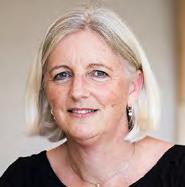
TAXATION
> BY ANDREA SCATCHARD
Andrea Scatchard is a Tax Partner at Deloitte, based in the Bay of Plenty. She can be contacted on ascatchard@deloitte.co.nz
out of the adjustment rules, meaning no GST could be claimed on purchase, but no GST would be payable on sale. This may be attractive for appreciating assets like land;
• Simplifying the way the rules work by increasing thresholds under which adjustments are not required and reducing or removing the need to make future adjustments for certain lower value assets;
• Clarifying the distinction between residential (GST exempt) and commercial (GST taxable) accommodation, to make it easier to determine which GST rules
apply to the provision of the accommodation and the sale of such properties;
• Suggesting changes to the way the sale of dwellings will be treated for GST, which is relevant where a dwelling forms only a part of the overall asset being sold, such as for farms with farmhouses or hotels/motels with manager accommodation;
• More clearly defining, and possibly delaying, the time at which developers can claim GST on properties acquired for development; and
• Requiring notice to Inland Revenue of the details of
land and high value aircraft or pleasure craft that are acquired where GST is claimed or the purchase is zero-rated because the assets are part of the purchaser’s taxable activity. This is to allow Inland Revenue to track these assets and ensure GST is paid on eventual disposal. If this is ringing alarm bells and you think that you might need to make a GST adjustment under the current rules, or that you might be affected by these proposals, you should seek advice from your accountant or tax adviser. Submissions on the proposals close on 27 April 2022.
Bad timing is bad business
I have been spending a lot of time meeting with owners of construction industry businesses lately and it has been very eye-opening about the challenges this industry faces.
One such challenge is the typical engagement process between the builder and their client and the time involved, which if not managed very carefully can lead to them doing a lot of work for very little or no profit and leaving the clients disappointed in both delivery time and final completed cost.
According to the business owners that I have spoken to, the normal time frame between a project being quoted to when it is all signed up and agreed to is around three months with major projects being much longer when lenders and local body authorities are involved.
The issue with this is that over a three month period the price of materials in late 2021 rose as much as 16 percent, with other costs such as fuel rising by as much as 30 percent in a similar period in early 2022 meaning that what was a project quoted 90 days ago with a 20 percent gross profit

CREDIT CONTROL
> BY NICK KERR
Nick Kerr is a Business Advisor at NJK Advisory Ltd. He is also director of International Private Investigations Ltd. Nick can be reached at nick@nzipi.com
margin could wind up being close to profit neutral once completed if these costs cannot be passed on.
This does not show any signs of easing with many economists forecasting a further 15 percent rise over the next year.
Not only are the materials used in building becoming more expensive they are also getting harder to get with major shortages leading to the average time for a standard home completion extending from five months in 2022 to around 12 months according to latest industry data.
Avoid absorbing increases
What was surprising to me is that many trades businesses are not using contracts or terms of trade that allow the costs to be passed on to their clients meaning that they have had to absorb the increases and deal with the disappointment of clients with the late completion of works due to material shortages.
This has led to a massive increase in the amount of debt mediation cases in the construction sector that we are being asked to assist with.
My advice for dealing with the above from a credit management perspective is fairly straightforward. Be very real-
Allow for pricing increases in materials pricing in quotes.”
istic with clients and customers in regards to timeframes for completion – it is always better to deal with a little bit of disappointment at the start of the process than a lot at the end.
Allow for pricing increases in materials pricing in quotes, quote what it will be when it is delivered, not the price it is now if you are not going to have it delivered now. Many suppliers will guarantee pricing for seven days maximum with some having price guarantees for only 24 hours. If your supplier can’t guarantee that they can get you the materials then do not promise your clients that you can get it for them. If the country’s largest construction companies, who spend hundreds of millions of dollars a year, can’t have guaranteed supply for certain goods then your average SME- sized company has even less chance. Use best practice up-to-date terms of trade that have provisions for unexpected delivery delays, material cost rises, time frame extensions, consequential losses etc. If your suppliers are having you agree to best practice terms and you are not having your clients do the same then you very well may become the meat (or vegan friendly plant based meat substitute) in a very unsavoury transactional sandwich. Just a thought.

Trustpower Baypark moves into the new year with a great line-up
It started well – then the restrictions mandated with the Government Protection Framework Red Traffic Light at the end of January changed the way we were able to do business. But our experience from previous Covid lockdowns meant we were able to adapt and respond quickly. Meetings usually now have a mixture of live and online attendees and our AV Team are proficient in providing the services for these Hybrid meetings.
While Speedway has livestreamed events adding to the live audience for some time, on 5 February the event was entirely livestreamed. The result was a success with several thousand linking remotely and able to enjoy the event. This service has continued as well as entry for a live audience under Red restricted capacity of 500 into the stadium.
As Omicron continues to grow and peak, we are optimistic that May could see the hosting of planned events in the Arena. The variety and level of activities at Trustpower Baypark has significantly increased with loyal and new audiences enjoying the entertainment on offer for all the community.
BayStation fun
Baystation offers adrenaline-pumping fun for the young and the young at heart with four action packed activities in one great location. Live out your Tokyo Drift fantasies on the electric Drift Trikes or combine the very best of go karts and sail boats to give you the ultimate land-sailing experience on the Blokarts.
For high-speed, adrenaline-filled action you can’t go past Paintball, or if you are looking for something a little less messy try out the outdoor Laser Tag. Combine our epic activities for the ultimate day out, perfect for birthdays, staff functions and events. BayStation is currently operating under the Covid Protection Framework (Red Traffic Light).
Baypark Speedway – 2 April
Our purpose-built speedway stadium is the home of family entertainment and some of the greatest speedway action around New Zealand.
So, buckle up and secure your tickets today, and don’t forget the
parking at Baypark is free!
To enjoy watching the races in style, we have a num ber of corporate boxes available to entertain your guests. They offer an exclusive, spacious, and comfortable environment all with outdoor balco nies for up to 20 guests accompanied with bar service and catering delivered by dedicated hosts.
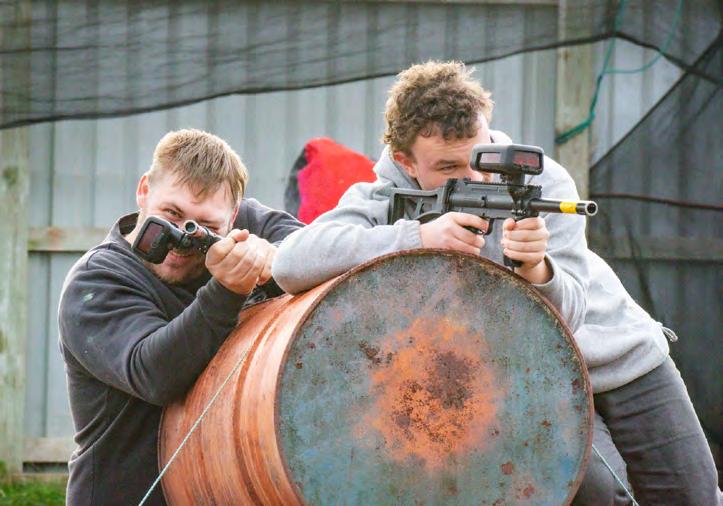
Next meeting 2 April is the popular Bay Grand Marshall Demolition Derby – don’t miss out tickets are limited with the restricted capacity. Check out all race meeting information here www.bayparkspeedway. co.nz
Tauranga Home Show –6-8 May
The 23rd annual Tauranga Home Show is the Bay of Plenty’s biggest home and lifestyle exhibition. For over two decades it has become the huge exhibition we see today.
The organisers work hard to bring together an exciting range of exhibitors from all over New Zealand, from small businesses to your favourite brands. Browse, compare, touch, feel and test products and meet your suppliers face to face.
Enjoy a great day out with the family – there’s plenty to enjoy including the Live Cooking Kitchen, a range of food trucks, entertainment for children and great prizes to be won.
Visit the Tauranga Home Show on Friday 6th May and adult entry is half price at just $6 (normally $12). There’s no need for vouchers, barcodes, or prebooking – half price Friday is our gift to you.
For more information visit www. taurangahomeshow.co.nz
The Bay of Plenty Wedding Show – 29 May
Planning your wedding is a beautiful,
fun experience so come along to The Bay of Plenty Wedding Show and be inspired. There are loads of gorgeous ideas and on-trend inspiration, and you can meet wedding vendors who can help you plan the most amazing day of your life.



Take the time to browse and speak to them, as they have a wealth of experience on offer. There will be giveaways and event day specials from our wedding specialists and a wonderful fashion show where you can view the amazing wedding gowns, bridesmaid gowns and menswear coming down the runway at 2.00pm.
Soak up the atmosphere and experience the fun, excitement, and glamour as all the top wedding spe cialists in the region gather at the Trust Power Arena, Mt Maunganui. For more information visit www. thebayofplentyweddingshow.co.nz
7 Days Live – 19 June
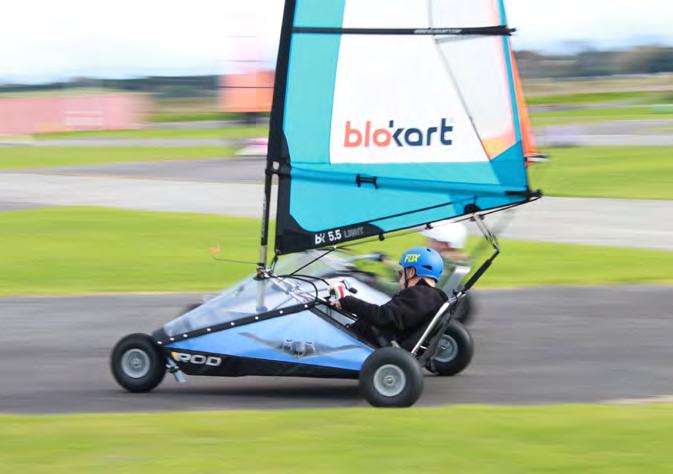
and the team on a stage right in front of you.
7 Days on TV is pretty loose and real, but 7 Days LIVE – on stage with no cameras, censors or editing – is a whole ‘nother level of uncut fun. This June, in your town, see Jeremy Corbett, Dai Henwood, Justine Smith, Paul Ego, Ben Hurley, Mel Bracewell
In the first half, seven of New Zealand’s best comedians take turns to smash you with their best stand-up comedy, then it’s a no-holds barred live version of 7 Days It’s a show that you won’t forget. Recommended for ages 15+.
For more information visit https:// premier.ticketek.co.nz/shows/show. aspx?sh=7DAYS2021
Trustpower Baypark is Tauranga’s Premier Venue for conferences, meetings, entertainment, and exhibitions. Offering a complete package in one convenient location that features state of the art meeting rooms, in-house catering, audio visual services, marketing/promotional services.
Tauranga’s Premier Venue
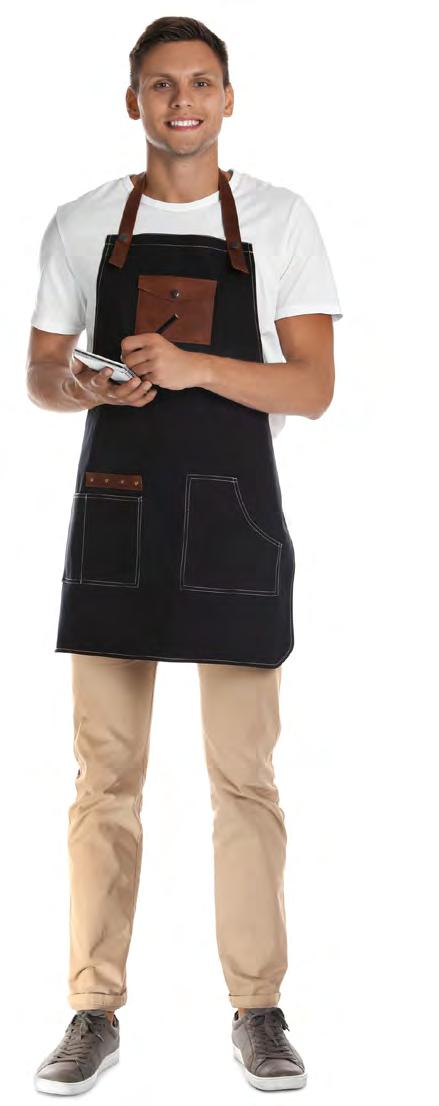
Why the future of employee experience remains a priority
When I started my working life in the mid 80s the question was not how was I, the employee feeling, but how was the boss feeling? If they weren’t happy, I would certainly know about it. The shoe is firmly on the other foot, awareness of company culture and employee engagement have changed significantly over the decades and never more than over the last two years.
How the employee experience has evolved
Covid-19 has shattered the “employee experience” that organisations have spent years crafting to attract and retain talented employees. It made aspects of work life easier for some and tougher for others. Those working from home no longer share similar offices or workstations, lunchrooms, or even internet speeds. People in the physical office have had to adapt to virusdriven safety guidelines.
Times of stress tend to be revealing. When
we asked how well their organisation stayed true to its values when making decisions during the Covid-19 emergency, just 62% said “well” or “very well”. Memories of this period will influence people’s feelings about their organisation’s culture for some time.
Employees have come to expect empathy, but leaders find it hard to sustain
The effects of the pandemic also resulted in empathetic behaviour some employees never expected from their leaders: offering to cover the costs for backup childcare, extra sick leave and “hero pay” for front line workers.
In India, one CEO

EDUCATION AND TRAINING
> BY MICHAEL SHAW
Michael Shaw is managing director of Dale Carnegie BOP Waikato (www.bop-waikato.dalecarnegie.com) . He can be reached on Michael.shaw@dalecarengie.com
announced they would reimburse employees forced to seek oxygen on the black market for family members, without regard to reasonable and customary limits and with no requirement for a receipt. Another committed to cover education costs for the children of its employee who succumbed to the virus.
In fact, research shows that workplace empathy ratings rebounded in 2021 after years of decline.
Yet as (what we hope is) the conclusion of the health emergency nears, many CEOs and managers can’t wait to get back to the “old normal” that better suited their own preferences. However, these preferences often conflict with those of many of their employees. Empathy doesn’t come naturally to many senior leaders.
In their 2021 State of Workplace Empathy study, Businessolver reported that this year
nearly seven in 10 leaders admitted they fear they will be less respected if they show empathy in the workplace and about the same number said they struggle to consistently show empathy in their work life.
On both points, there were big increases over 2020 suggesting many leaders are finding empathy especially hard to sustain over the long term. It wouldn’t be surprising if employees now feel a sense of betrayal as leaders’ empathy begins to evaporate–while the problems they face themselves remain.
When compelled to by the crisis, companies allowed work from home and communicated more often and clearly, providing a window into an employee experience that some workers didn’t know could exist. Now there are a considerable number who are unwilling to return to a time when company leaders
chose to ignore difficult issues such as burnout, childcare, mental health, diversity and inclusion and other challenges of integrating of work with home-life.
Advice for leaders to build a culture of empathy
1. Embrace and continue empathetic leadership. If it’s not a strength for you, make the effort to build the skill.
2. Actively listen and consider how the employee experience looks now for each employee – and how decisions may once again change it for better or worse.
3. Remember that it’s all about expectations – you can’t turn back the clock. Employees know now what they want and it’s up to employers to deliver if they intend to retain top talent.
Lessons from Omicron on safeguarding small businesses
While many of us thought we’d settle into a new normal in 2022, the rapid spread of Omicron has dimmed our hopes.
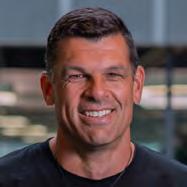
WORKPLACE WELLBEING
> BY CRAIG HUDSON
Craig Hudson is Xero’s managing director for New Zealand and the Pacific Islands.
For small business owners every new variant seems to come with its own set of challenges.
With many required to self-isolate at home, and even more self-imposing isolation type restrictions to reduce their personal risk of infection, Kiwi businesses are experiencing the ripple effects of Covid-19 now more than ever before.
Businesses want to go back to business as usual, but the finish line keeps moving just a little further out of reach.
In light of this, we need to help prepare Aotearoa’s small business economy against further disruptions.
Continuity planning is a non-negotiable
There’s no doubt in my mind our small business community is incredibly flexible and agile. After all, a small business owner or sole trader needs to
wear many hats every single day to get the job done and keep the lights on – this isn’t new.
However, since the pandemic’s arrival, many small businesses have been in survival mode and therefore been focusing on short-term solutions to quickly respond to current pressure points.
As we continue to tackle these challenges, business owners need to consider what issues have caused them the most stress in the past two years, and then understand what solutions can be implemented to overcome those challenges in the long term.
When unforeseen situations like this happen, having a clear road map is pivotal.
If you don’t know where to start, there are plenty of guides online to help get you started – like the Xero Business Continuity Plan which details what you should account for in your
planning during these uncertain times.
Digitalisation remains the key to success
When the pandemic hit, businesses around the world quickly learned the importance of being highly digital, and those with a focus on digital-first were well placed to make fast decisions.
Before Covid-19 hit our shores, 11 percent of the most productive small-to-medium businesses had five or more apps connected to their Xero account. In comparison, just seven percent of the least productive businesses had five or more apps connected.
Digitally enabled small businesses were significantly more resilient throughout the Covid-19 crisis as the unique nature of the shock forced more companies to digitise; managing sales, staff and oper-

ations remotely. Looking ahead, digitalisation is no doubt going to remain a crucial part of business development as Covid continues to bring the unexpected.
Government support has been, and continues to be, critical
In response to the onset of the Covid-19 economic crisis, Governments around the globe responded with enormous support, particularly in the form of wage subsidy schemes, to prevent large-scale job losses and business closures during lockdowns.
Xero’s data found the Wage Subsidy scheme stabilised small businesses early in the pandemic without severing the
link between job reallocation and productivity. As a small business owner, keeping up to date with the latest government announce-
When unforeseen situations like this happen, having a clear road map is pivotal.”
ments and offerings has become a vital part of the workload. Currently, businesses are
able to apply financial support to pay workers while waiting for a Covid-19 test result and to help pay employees who have been advised to self isolate because of Covid-19 and can’t work from home.
Aotearoa’s history with Covid-19 and lockdowns have demonstrated how quickly our small business environment can change. Luckily, we’re in a good position to be able to learn from what has happened overseas to be better prepared to manage what comes next. And while I know small business owners want certainty right now, the best thing we can do is focus on getting the fundamentals right so no matter what circumstances come our way in the coming months, we can perform as well as possible.
Bluelab take out top national award
As the world wakes up to the significant challenges presented by feeding a growing global population, CEA (Controlled Environment Agriculture) is gaining traction as a method to grow more food with less resources.
By RICHARD RENNIE
Tauranga-based com-
pany Bluelab has been recognised for business success in providing tools that help CEA growers rise to the global demand for more food grown in a sustainable manner.
In the New Zealand International Business Awards by NZTE, Bluelab took home the Supreme Award. The Excellence in Digital Commerce Transformation Award, and runner-up in the Best Established Business and Innovation in Covid Response categories, Bluelab staff were “thrilled and grateful” for the recognition.
A record 53 finalists made it to the last stages of the competition, with winners chosen by an independent judging panel skilled in growing businesses internationally.
Bluelab has previously been awarded the Excellence in Innovation Award at the same awards in 2019.
Chief executive officer Greg Jarvis purchased NZ Hydroponics in 2000, which he restructured and renamed Bluelab.
Years of experience
Before Bluelab, Jarvis had
more than 18 years of experience in management through his time at Dow AgroSciences, Fernz Corporation and Balance Agri-Nutrients.
Recognising the opportunity in the electronics arm of NZ Hydroponics, Jarvis helped the company double-down, building electronic meters, monitors and controllers to enable growers to accurately measure and control parameters pH, conductivity, and temperature.
“It soon became apparent the really significant growth opportunities were lying in Europe and the United States, and this was prior to greenhouse operations there really scaling up.”
Since then, Bluelab has grown into an internationally recognised industry-leader in the CEA industry, with 98 percent of the company’s output being export. North America has one of the most developed CEA markets, with the rest of the world following suit.
Forecasts indicate that the CEA market will grow at 18.7 percent CAGR to US$172 million by 2025.
“We are now seeing more and more crops venture indoors to controlled environments.
“Even if you look locally
at what we do in New Zealand with blueberries. Many growers are moving away from being field-grown and tend to have a high level of protection, with sophisticated irrigation and fertiliser systems.”
Issues around fertiliser costs are also compelling producers to try and find the peak of their controlled crop’s production, minimising waste.
“There has to be an economic incentive for a grower to invest in CEA operations.
“We save them dollars by helping them save on water use, and delivering more general information on nutrient inputs, stopping them putting more on than they need.
“They end up with much greater certainty of yield and in the final crop’s quality.”
The future of Bluelab lies in innovating customer-centric hardware and software alongside the expanding CEA industry. Bluelab develops all its technology in house and has worked in partnership with Callaghan Innovation and Lincoln Agritech.
Lincoln Agritech instrumental assistance
Lincoln Agritech was instrumental in helping develop
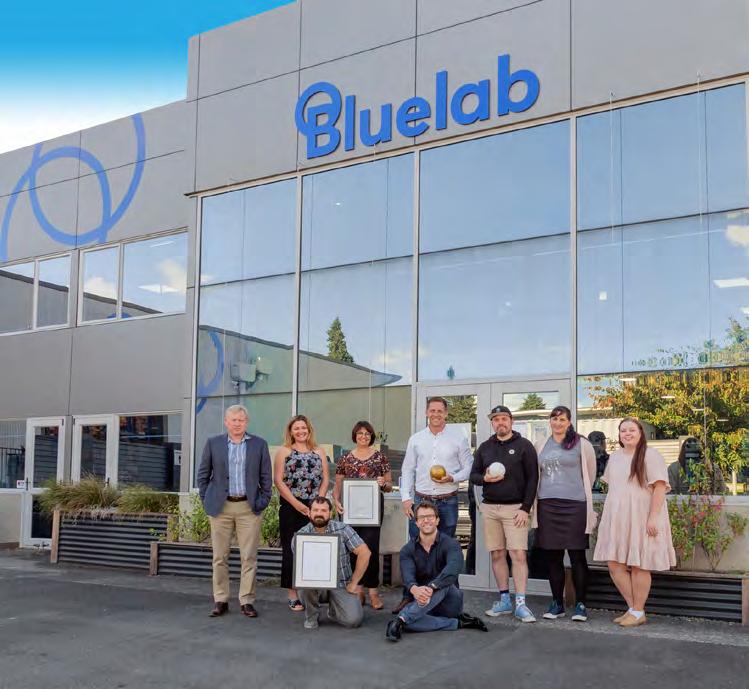
the company’s latest piece of equipment to prototype stage.
With the majority sale of Bluelab last year to Pioneer Capital and the New Zealand Superannuation Fund, Jarvis is confident about the company’s ability to access capital for future innovation and expansion.
For a company that started with less than a dozen staff and
now employs 120, including 15 offshore, and Jarvis said Bluelab has no reason to not be located in Bay of Plenty. He is also encouraged by the growing level of agri-tech companies the bay hosts.
Competition between companies for staff has heated up significantly amid the covid border shutdown, and he is looking forward to a loosen-
ing of migration and offshore staffing ability in coming months.
“The Bay holds significant opportunities for the exceptional talent we see in New Zealand and the world.
“There is an exciting ecosystem developing here around technology that can compete with career opportunities offered in our major cities.”

At Bayleys, we believe relationships are what businesses are built on and how they succeed. We understand that to maximise the return on your property you need:
A business partner that understands your views and goals
Contact the Bayleys Tauranga Commercial Property Management team today.
Bluelab staff with their InnovationAward outside theirTauranga offices. Photo/Supplied
NEW APPOINTMENTS
New appointments boost local business profiles
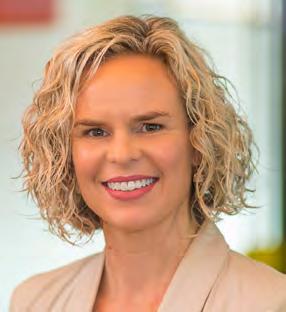
Leesa Speed
Leesa joined Holland Beckett Law’s Family Team in February 2015 and has practiced for over 20 years both here and in Australia. She specialises in resolving post-separation relationship property disputes, family violence applications, parenting and guardianship matters, adoptions, care and protection of children, child support and claims arising out of wills and estates. Leesa has made many appearances in the Family, District and High Courts and is on the panel of Lawyer for Child.
Georgina Smith
Georgina carries over 15 years legal experience and joined Holland Beckett’s property and commercial team in October 2014. She advises
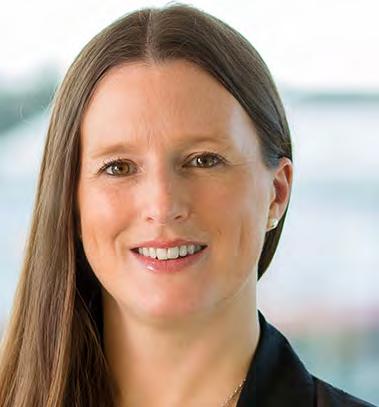
Tracy Tomsett
Sharp Tudhope Lawyers is pleased to welcome Senior Associate, Tracy Tomsett, to Tauranga. Tracy joined the firm mid-2021 and has recently relocated to Tauranga. She brings her extensive corporate and commercial expertise working with private and public sector clients in New Zealand and overseas.
Car San Diego
Senior Solicitor Car San Diego has joined the property team at Sharp Tudhope Lawyers. Car brings her extensive knowledge of property and private client transactions to the firm. Car provides estate and succession planning advice along with family trusts and relationship property services.
Aimee Edwards
With more than 20 years in the legal industry, Aimee Edwards has joined
on a range of matters including loan and security structuring, commercial leasing, property developments and conveyancing. Georgina began her legal career at Gault Mitchell Law in Wellington then spent time in the corporate legal team of a housing association in London.
Philipp Wilkens
Philipp Wilkens has joined TABAK Business Sales as a Business Broker in January 2022 with a focus on connecting buyers and sellers of quality businesses.
Prior to joining TABAK, Philipp has served the Tauranga business community as the owner and operator of Computastyle Signs.
Coming from a family of entrepreneurs and business owners, he fully understands the hard work, self-moti-
Sharp Tudhope Lawyers as a Senior Associate. She has significant experience across a range of legal areas including business, commercial and residential property, trusts, asset protection, and planning. Aimee is also available to meet with clients one day a week in Waihi Beach.
Keryn Anderson
Keryn Anderson has joined Sharp Tudhope Lawyers as a Senior Associate. Keryn is an experienced corporate and commercial lawyer, with over 15 years advising on mergers and acquisitions, corporate governance matters and general commercial contracts. She has worked for large corporate firms in Auckland and London and has also worked inhouse for several of the UK’s largest financial services institutions. This mix of private practice and inhouse experience means Keryn understands firsthand the opportunities and challenges businesses face and how to advise on them.

vation and sacrifice needed to operate any business, be it large or small. Holding university degrees in both Business Administration and Finance, he has a strong understanding of the commercial aspect of business and works closely with his clients to help



them achieve the best result from their business.
Every client is unique, and Philipp takes the time to listen and understand their individual situation. Being extremely passionate about his role, he is always happy to talk business and offers confidentiality, honesty, and attention to detail at all times.
Mat Brown
Xerra Earth Observation Institute welcomes Mat Brown as Sales Manager, joining the team to commercialise their platform Starboard Maritime Intelligence.
Following a successful 17 year career in media both in the U.K. and most recently as the regional sales manager for Mediaworks based in Tauranga, Mat joins the team taking their innovative vessel tracking

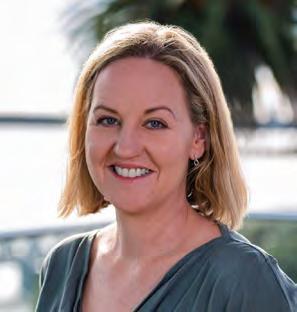
and analysis software to new clients globally. Mat is based in the Bay, as part of the remote working team, and will be responsible for domestic and international clients in fisheries, intelligence and logistics. Starboard is a key tool in the fight against illegal fishing.
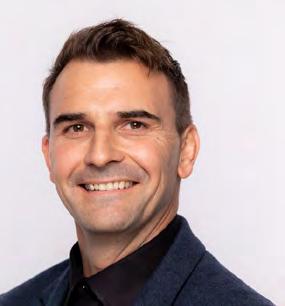
Bay of Plenty business teams excel
Competition was tight in this year’s Aotearoa Bike Challenge with a number of Bay of Plenty workplaces taking out places in the national workplace challenge.
Rotorua Trails Trust was second nationally for an organisation with 7-19 staff and Tauranga-based Lysaght Consultants was third nationally in the 20-49 staff category.
Tauranga City Council’s Travel Safe Coordinator Yvonne Rooney says this year’s competition was tighter than ever as rivalry heated up locally and nationally.
“A number of local offices competed as part of their national teams –and they had fierce inter-office competition,” says Yvonne.
“Biking is increasing as both a transport choice and for fitness or fun.
“This year we saw more workplaces than ever log rides in the Challenge,” says Yvonne. “More than 372,000km were recorded in the Bay of Plenty. Of those, 100,000km were for transport purposes – potentially replacing car trips and saving more than 18,000kg of CO2.”
This year the month-long Aotearoa Bike Challenge was supported by a group of councils across the country, including Tauranga City Council, along with some major sponsors.
The Aotearoa Bike Challenge utilises the international platform – Love to Ride.
The aim was to get more people choosing to ride their bikes as transport.
The challenge was complemented by Bike Month for Tauranga and Western Bay of Plenty, which provided people of all ages with opportunities to improve their cycling skills and increase their confidence to ride their bikes.
Travel Safe organised a variety of events such as guided historic, neighbourhood and commuter rides, maintenance workshops and cycle skills sessions.
Travel Safe Team Leader Sonia Lynds says the Aotearoa Bike Chal-
lenge and Bike Month are great ways to encourage and support people to change their travel habits, save money, and promote active lifestyles that can improve mental and physical health.
Travel Safe continues to support school-aged children with bike safety and has a dedicated adult cycling role to support adults who are nervous, or unsure where they can ride safely.
“For those of you who enjoyed the challenge aspect, this year participants in Tauranga can keep up the momentum by signing up to The Wednesday Challenge.
Workplaces can set up teams, or you can compete as individuals, to use different modes of travel on Wednesdays.
Be in to win prizes while making a change for good,” says Sonia.
Sign up to The Wednesday Challenge at www.wednesdaychallenge.

TracyTomsett
Aimee Edwards
Car San Diego
KerynAnderson

First on the scene
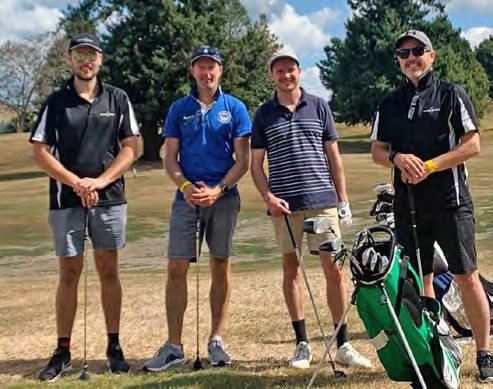
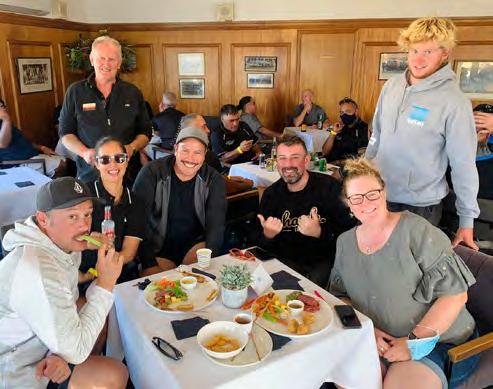
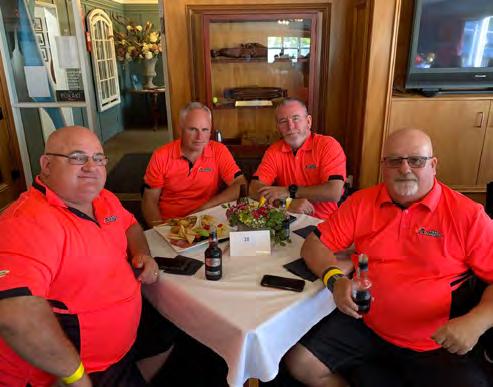
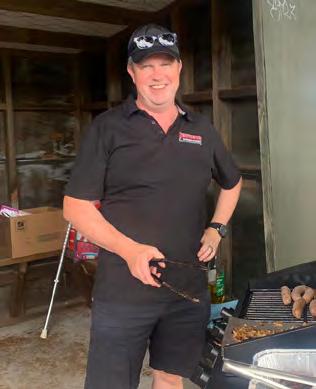
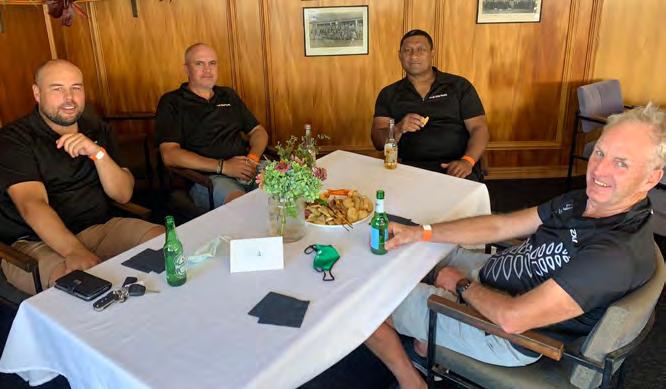


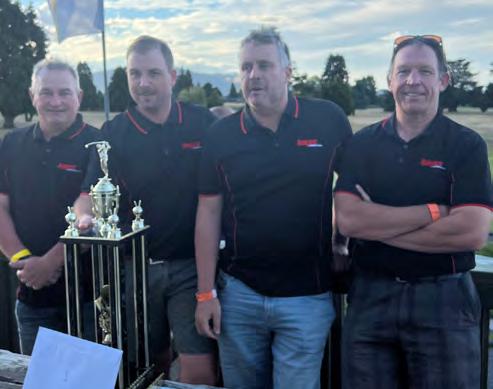
1 7 4 8 5 9 10 2 3 11 12
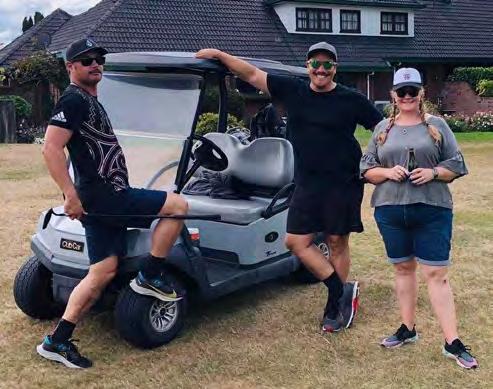
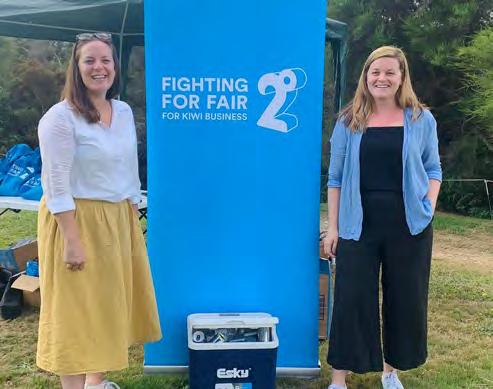
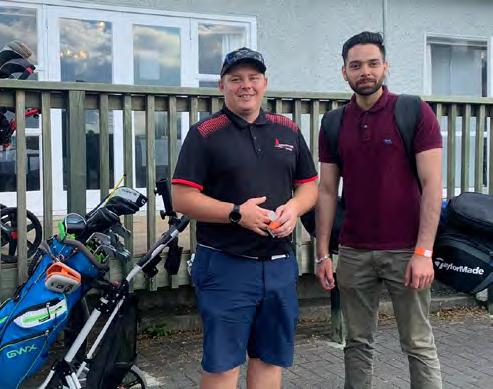
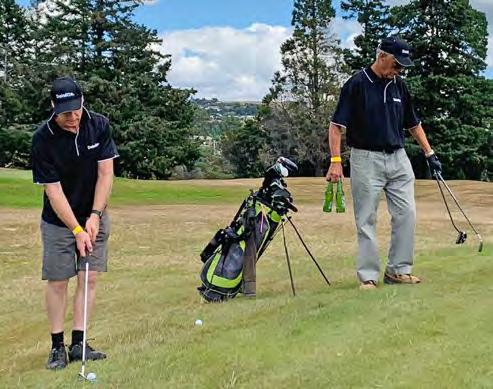
Photos from the Chamber Annual Ambrose Golf Tournament 2022 on Friday 18th March 2022. Hosted by: Rotorua Business Chamber at the Rotorua Golf Club, Arikikapakapa Photography credits: Saniya Abdul
1 Holland Beckett Law Team. 2 Haydn Marriner (Destination Rotorua),Jo Keefe (JK Marketing & Media) Bryce Heard (CEO,Rotorua Business Chamber),Tamati Coffey (Labour Member of Parliament),Tim Smith (Our House),Jacky James & Oliver James (The Shine Collective). 3 Traffic Management NZTeam.
4 Colin MacPhee (Rotorua Business Chamber). 5 TelferYoung RotoruaTeam. 6 Tamati Coffey’sTeam.
7 Amy Cram (Physio Direct),Jo Keefe (JK Marketing & Media),Abbie Proudley (BNZ) &Tammy-Lee Holmes (Goal Digger). 8 Bryce Heard,Colin MacPhee & CharlieWindell (Rotorua Business Chamber). 9 Donna McEwen & ElsaWille (2degrees).
10 WinningTeam of the Golf Day,Hayes International. 11 Sean Bell & Harman Randhawa (2degrees). 12 Deloitte Team.
Don’t worry, it’ll come right
Have you ever wondered when you check in your bags and travel to the other side of the world, changing planes en route and crossing numerous time-zones: “How do my bags know to follow me and magically pop out onto the conveyor at the correct final destination (nearly always)?” I know, you’re all going to say out loud, “Barcodes!”
With all due respect, I’ve seen the guys meticulously loading the suitcases from the trolleys into the cargo hold from my economy-class window, astounded by their ability to completely ignore the “FRAGILE: HANDLE WITH CARE” and, “THIS WAY UP,” labels. Are these the very same guys I entrust to ensure my freshly ironed underpants will be there to meet me when I step into the arrival hall at Ulaanbaatar International Airport? I guess so.
Back when we sent postcards, we would affix a postage stamp, pop them into a post box and “voila”, a few weeks later Nana would know the leaning tower of Pizza was still on a lean. How many sets of hands did that postcard have to go through to end up on grandma’s fridge?
Although we have moved on, and God has invented the internet, still the mystery remains.
The mystery of ‘buy now’
When I click, “Buy now”, how

LUXURY & LIFESTYLE
> BY ALAN NEBEN
Alan Neben is a Mount Maunganui local and experienced New Zealand publisher. He is proud to have been able to use the word ‘affix’ appropriately in this article. alan@bopbusinessnews.co.nz
does my purchase magically arrive at my Mount Maunganui house, often only a few days later, from a small remote 10 million population village somewhere in the Chinese countryside?
Admittedly, although that was regularly the case in preCovid, pre-logistics-crisis, pre-WWIII times, sometimes the goods still never arrived. And there was of course still a good chance the size and quality of the purchase would be … well … ‘rubbish.’ But we accepted that as the cost of being a global cheapskate –caveat emptor
My point is, somehow things got to their destination. We’ve come to believe that’s just the way it is. We don’t need to know the ins and outs
The spectre of a new 2022 version of carless days and ration books may be looming and I for one find the prospect quite terrifying.”
of how they get there, we just need to have faith that they will get there. The very fabric of our modern life relies on the stuff “getting there”.
Of late my faith has been tested, however. “Just-in-time” has been replaced with “notin-the-foreseeable-future”.
This is a new environment for most of us. Unfamiliar territory to those who were not
born at the time of the 1970s’ oil shocks and the rampant inflation of that era. I wasn’t born at the time of the second world war either.
For me concepts like rationing and empty grocery shelves are the backdrop of famous war movies and life in grey cities behind the iron curtain – something we would never have to endure the way

our grandparents and old communists did.
Yet the spectre of a new 2022 version of carless days and ration books may be looming and I for one find the prospect quite terrifying. And that’s to say nothing of the dark shadow cast by the real threat of nuclear war.
While we take comfort here in New Zealand from being, well, here in New Zealand, being at the end of the world does have downsides. When the rest of the world runs short of ‘stuff’, who’s most likely to miss out on getting a share of available ‘stuff’ – we are.
From my office window I see the steady stream of container ships continuing to load and unload at the Port of Tauranga. Long may that continue. I can live without the grossly undersized tee-shirt I ordered online from that quaint Chinese industrial village. I don’t need postcards – we have Facebook now. But I do need the shelves at the supermarket to be replenished and I do need petrol for the car. I wish I was more reassured by my friend’s consoling words, “Don’t worry, it’ll come right.” Will it though?
Online interview tips to give you the edge
In this ever-changing world and with the reshaping of the modern workplace, we are turning more and more to online meetings. With job seekers looking for flexibility and people isolating, working from home is evolving and keeping up our face to face interactions means remote meetings are here to stay.

I
HUMAN RESOURCES
> BY KELLIE HAMLETT
Talent ID are Recruitment Specialists and can support you through your recruitment process. Please feel free to talk to us about this by calling 07 349 1081 or emailing kellie@talentid.co.nz
t is paramount to get up to speed with online meeting platforms as employers now prefer to conduct online interviews to test candidate’s computer skills and online etiquette. Standing out from the crowd while confined to an online medium can be challenging for all parties involved. Employers trying to put their best foot forward and employees trying to present themselves as the best candidate, both want to make a great first impression. Below are some essential tips for a successful online interview to give you the edge. As with all interviews, be prepared. But especially with the reliance on technology it is critical you make sure everything works as it should. Test your equipment and not just your audio and video connection. Also make sure your battery life will last the length of your interview and you have a solid Wifi connection. There is nothing quite so frustrating as a lagging connection for either party.
If you have to do a presenta-
tion, ensure this is compatible with your meeting platform.
Set yourself up in a quiet space near your wifi access point to improve connectivity. Consider having a second device available just in case you run into problems. It is also a good idea to set up your device on a flat, stable surface to make sure the viewers don’t end up suffering motion sickness.
Face yourself towards the light source, to avoid creating a silhouette. Also don’t forget to check what’s in the background or blur it out, especially if ‘zooming’ from home.
Avoid using your phone for the interview
Avoid using your phone as your device for the interview, if you can, as too many people forget that they are not on a normal call and revert to picking the phone up and going for a wander, inevitably showing the other viewer more than they bargained to see.
For some being in front of a camera lens comes naturally,
for others not so much. If you are camera shy, get online and start video calling your friends and family. The more practice you have the better. This will give you the feel of talking in front of the camera and eventually it will become more natural.
Interviews can be nerve-racking as it is, without having another fear to contend with. Practice makes perfect. Look straight into the camera as much as you can. This creates the eye contact that is often lost to the screen. It is also not a good look if you’re the employer and seem unable to look straight at them.
Talking to people on a screen makes it much harder to get a feeling of someone in comparison to an in-person interview. Many of our natural senses are prohibited from doing their job and online interviewing requires new strategies for gauging whether someone is a good fit or if they will be a good employer.
Lean into the intimacy of the screen. Sitting mere inches away from each other can draw
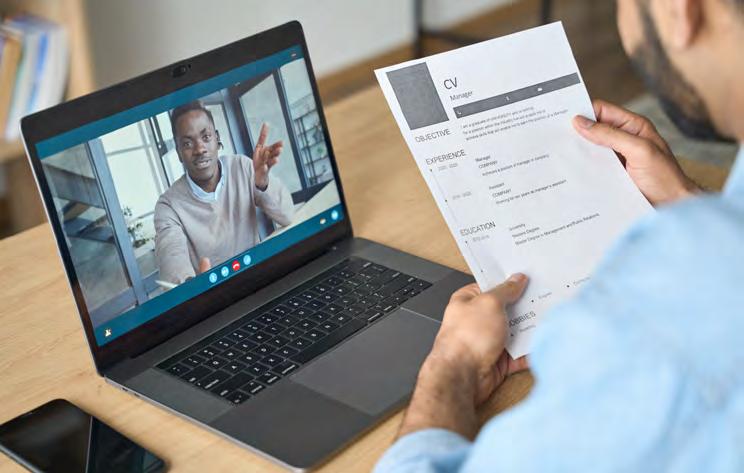
people out of their shell and they will often relax, open up more about themselves with their background story, even more so if they are sitting in the comfort of their own homes being interviewed.
Emotional intelligence is a key factor that employers are looking for in a candidate. It determines a person’s ability to relate to others, navigate difficult situations with ease, go with the flow, and be able to read a room. This can be especially difficult in an online interview.
To gauge someone’s EQ in an online interview ask leading questions that dig a little deeper into someone’s character – questions that open up a person’s genuine response, not a pre-empted, rehearsed answer. Something like, if you could invite any three people to dinner, past or present, who would they be and why? It’s not so much the who, but the why that will give you a great
understanding of what the candidate finds important and where their emotional intelligence sits.
For a candidate asking questions of the employer something along the lines of ‘what inspires you the most about this organisation’? will help determine if relates to you.
Dress to impress
This should be the 101 of interviewing. Ideally, we should all be dressed a notch above the company’s general attire when interviewing. The professional dress code has been slipping.
With more relaxed casual work wear being acceptable in offices, candidates are taking liberties in what they wear to an interview.
Working and interviewing remotely, it’s not uncommon to head to a meeting half dressed.
Both parties need to make the effort here and be present in the moment. Being dressed
for the occasion will ensure the professionalism doesn’t slip and the interview stays on track. An interview is not the time to be casual. It’s about making a great first impression and you only get to do that once.
For most roles there are usually a few candidates to choose from. However, most skilled candidates in today’s market are facing multiple offers. How prospective employees view your organisation and how you view them is critical to a successful interview and overall, a successful placement.
Both parties are judging and assessing to see if the fit is right, ensuring the organisation, the role and the candidate align. By following the basics online tips, can allow all parties to put their best foot forward and stand out from the others giving you the edge needed to be the employer or candidate of choice.
Timber Design Centre to create future where timber construction leads the way
Envisioning a future where timber is used more widely in mid to high rise buildings and contributes to carbon neutral targets, is an exciting opportunity in building design. The tools to make this a reality are now coming together with the launch of the Timber Design Centre.
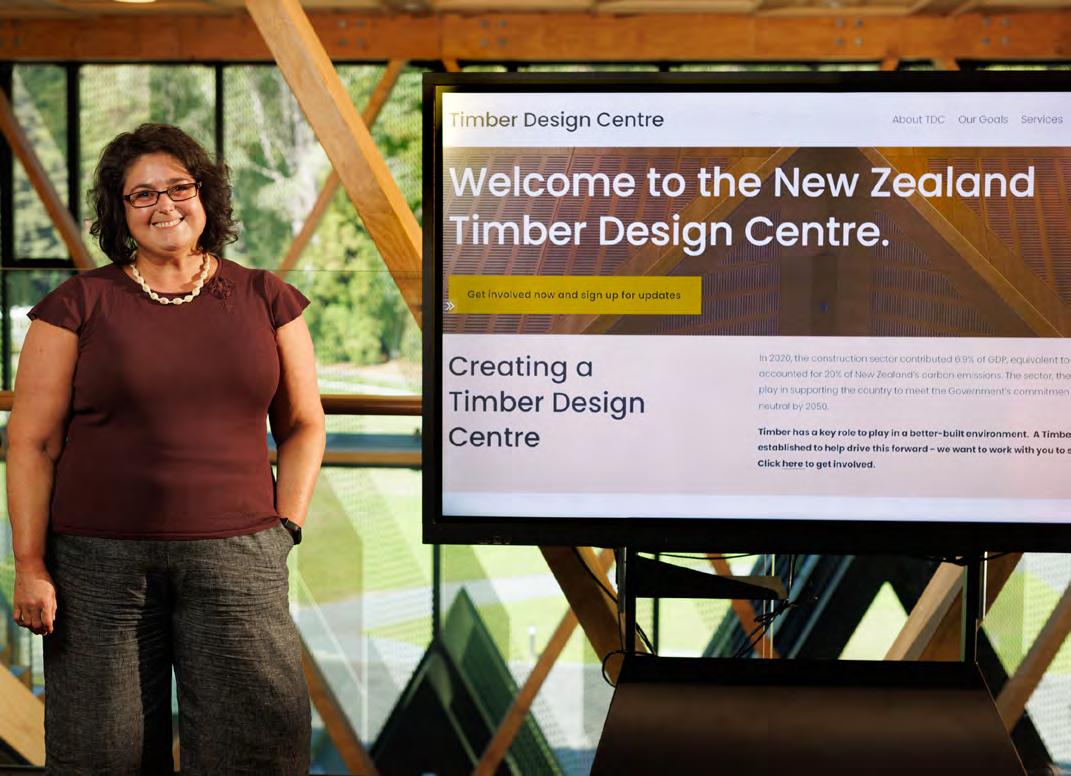
Te Uru Rākau – New Zealand Forest Service deputy director general Jason Wilson announced the launch at the WoodWorks conference today, explaining that the Timber Design Centre aims to increase the use of timber, particularly in structures such as offices, hotels and multi-storey apartments.
The Centre will provide expert advice, research, information and educational resources for those in building design and construction.
The services are being shaped directly by industry and the timberdesigncentre.co.nz website has been created to support this from day one.
The Centre’s work programme will be co-designed with a wide range of people involved in the building construction process including developers, designers, council planners and consenters, architects, engineers, builders, building owners, students and researchers.
The Centre is an initiative between Te Uru Rākau – New Zealand Forest Service and a consortium comprising Scion (Crown Research Institute), the Wood Processors and Manufacturers Association (WPMA), New Zealand Timber Design Society and BRANZ.
The consortium explains that the greater use of timber in construction provides an opportunity for the sector to support the Government’s commitment to be carbon-neutral by 2050, whilst realising the broader economic and wellbeing benefits of including wood products in multi-storied buildings.
Greater use of locally harvested timber products in apartments and offices not only significantly reduce the carbon footprint of these building structures, it also offers the natural characteristic of comfort and warmth to occupants that are rarely found in other building materials.” – Stephen Macaulay, WPMA Chief Executive.
Scion sustainability architect Andrea Stocchero says the world is on a quest to decarbonise and many people don’t realise New Zealand’s built environment is responsible for about 20 percent of the country’s carbon footprint due to the emission of greenhouse gasses over the full life cycle of buildings.
This includes embodied emissions of building materials and products.
“New Zealand can maximise the use of sustainably sourced, locally grown and manufactured wood products.
“Trees sequester carbon from the atmosphere while they’re growing, and as long as the wood is in use, that carbon is stored so it’s not going back into the atmosphere.
“If the timber is sustainably certified it means that the forests are re-growing after each harvest, and the carbon sequestration cycle continues,” he explains.
Timber Design Society president Dr Daniel Moroder says the time is right for New Zealand to have a dedicated timber knowl-
edge centre which provides advice and guidance on timber construction.
“Over recent years, the interest in engineered timber construction has increased significantly and we now need to ensure that clients, designers, contractors and authorities have all the information they need to build efficiently in timber.
“The centre aims to bring the timber industry together and to provide answers to all current obstacles we encounter during the design and consenting process of timber buildings,” he explains.
WPMA chief executive Stephen Macaulay says technological advancements in wood manufacturing provides an opportunity to accelerate the use of engineered mass timber products in medium to high rise buildings across New Zealand.
“The Centre has a key role to play in promoting greater use of an expanding range of timber products available to the construction industry.
“Greater use of locally har-
A
SUSTAINABLE SUCCESS STORY IN THE BAY OF PLENTY
Surging demand for sustainable packaging sees Contour International quadruple capacity
Contour International have serviced and supported the food production sector with packaging solutions for over 20 years. Despite the pandemic, the last two years have propelled this Tauranga-based business to new heights.
Managing Director James Morren says, “we’ve always pursued recyclable materials as much as possible, but when we saw our client’s appetite for compostable options, we invested hard and fast into research and development. We’ve worked with international materials experts, local 3D printers, our technical team and customers to develop new packaging solutions, as well as the supply chain to support them.”
And the effort has paid off.
Contour, whose service offering covers packaging equipment, consumables, and the service support to keep production lines humming, has seen such rapid growth that their previous headquarters were bursting at the seams.
“With numerous clients packaging tens of thousands of products each day, we are a vital part of their value chain, and we take that responsibility very seriously,” says Greg Morren, Sales & Operations Manager.
“We’ve quadrupled our footprint to meet demand, but also for the stockholding capacity to safeguard our clients against the impact of global supply chain disruptions which have plagued New Zealand manufacturers for the last 24 months.”
One key focus area has been tray sealing. Building on their time-proven expertise with kerbside-recyclable PET food tray packaging, Contour has invested heavily in developing home compostable tray-sealing solutions for fast-turnaround and flash-frozen products. Their responsiveness to the market and their sparkling new 4,000m2 facility further cement Contour International’s position as a high-scale Kiwi leader in packaging solutions across specialty areas like tray sealing, vacuum packing, and pouch packing.
“We are excited about the new space and can’t wait to share more in the upcoming weeks. Our whole team is enthusiastic; it is a real opportunity for both the business and our fantastic people to continue to grow.”
vested timber products in apartments and offices not only significantly reduce the carbon footprint of these building structures, it also offers the natural characteristic of comfort and warmth to occupants that are rarely found in other building materials.”
BRANZ General Manager of Research Dr Chris Litten says the development of the centre has been a true collaboration between Government, industry and the research community.
“We are excited by the role the Timber Design Centre will play in challenging the construction sector to produce healthier and more sustainable buildings. BRANZ is proud to support the work of the Timber Design Centre in providing evidence-based information for low-emissions construction.”
The Government is funding the Timber Design Centre as part of its Fit for a Better World roadmap and is one of several key initiatives under way this year to help transform the forest and wood processing sector.
